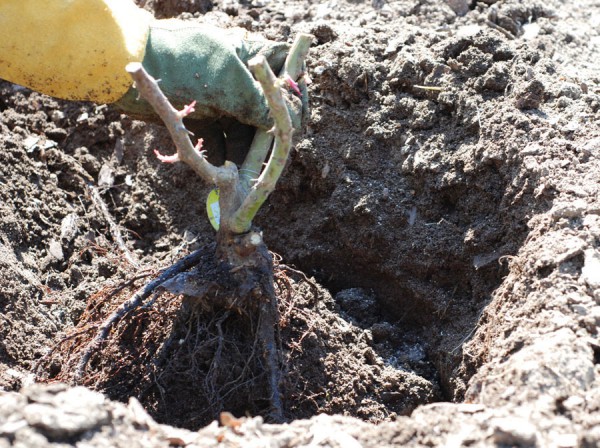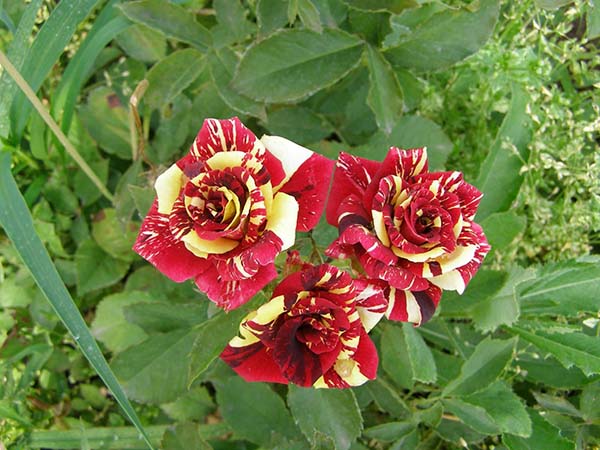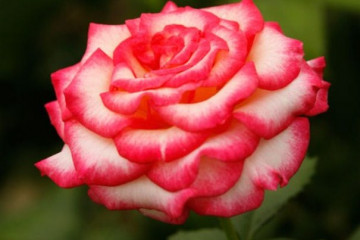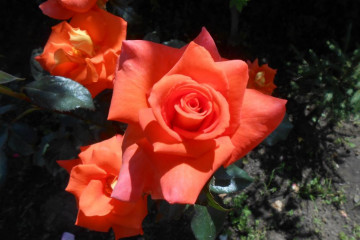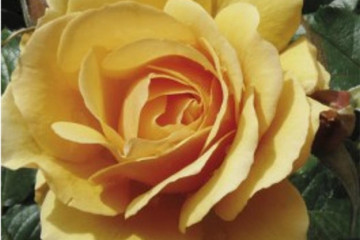Rose Abracadabra
Content:
A hybrid tea rose with a funny name Abracadabra is capable of surprising with its unusual and unexpected colors. Just one such twig added to the bouquet will make it original. Rose Abracadabra from the group of hybrid tea varieties was created by Californian breeders about 20 years ago. It is the most beautiful and widely known species in its group.
Brief description of the Abracadabra rose
Red-burgundy rich, bright colors with marble patterning are characteristic of the Abracadabra rose. At the end of flowering, the pattern turns white, and the flower itself becomes burgundy. On one branch you can see buds of white, yellow, burgundy. All tones are randomly mixed in whimsical ornamental patterns.
Advantages and disadvantages of varieties of rose hybrid tea abracadabra
The key features of the variety are:
- attractiveness;
- variability of color of inflorescences;
- long flowering.
The only drawback is considered to be low resistance to cold.
Use in landscape design
Climbing rose Abracadabra is very convenient for decorating a garden or courtyard in a private house. Garden or park area thanks to colorful bushes will become cozier and take on an extraordinary look.
Growing a flower, how to plant it in open ground
Planting is practiced mainly by seed, as well as seedlings and cuttings.
What time is the boarding
The planting time of the varietal rose Abracadabra is not limited by strict dates. Springtime envisages the end of April - beginning of May. Autumn - October.
Autumn planting should be treated with special attention. It is advisable to have time with the landing before the onset of a prolonged bad weather.
Location selection
A sunny, well-ventilated area is chosen. An open sun is not suitable as well as a permanently shaded place. But the Floribunda Abracadabra rose needs protection from strong winds. Preference should be given to neutral or slightly acidic fertile loams.
How to prepare the soil and flower for planting
The soil is prepared well in advance. The soil is being dug to a depth of 30 cm.The soil is filled with organic and mineral fertilizers at the rate of:
- peat (also manure or compost) - 10-15 kg,
- mineral phosphorus - 100-150 g per 1 square meter of soil.
If it is necessary to neutralize, lime or ash is added (up to 0.5 kg per 1 sq. M).
A hole with dimensions of 40x50 cm is being prepared, with a drainage filling. The hole should be up to 70 cm deep. Crushed brick, expanded clay, crushed stone with a layer of up to 10 cm are used as drainage. The third part of the hole should be filled with a substrate in the form of a slide.
Seedlings also undergo training, which is as follows:
- roots are shortened;
- damaged roots are removed;
- shoots are cut off to 2-3 buds;
- cuttings are dipped in a liquid mixture, including manure and clay, based on 2 parts of clay - 1 part of cow dung.
You can revive the roots by dipping them in water for several hours.
Planting procedure step by step
After all the preparatory work has been carried out, the landing itself will not take much time:
- Carefully spread the roots of the seedling in the planting hole.
- Compact the substrate around the bush to protect the root collar from temperature extremes, and fill the hole with soil.
- Water the plant, avoiding moisture on the shoots. This is necessary to prevent sunburn.
Plant care
Rose Abracadabra is considered a capricious plant for all its beauty. The difficulty of leaving is that:
- the flower needs a lot of light, but not direct;
- the rose needs abundant watering, but it cannot be moistened too much;
- the flowering process can last until frost, but the reaction to cold is negative, since the plant is thermophilic.
Watering rules and humidity
Watering should be regular, but it should not be brought to the formation of waterlogging, so 1 watering per week is quite enough. In drought, you can water more often.
Top dressing and soil quality
In different periods of plant life, feeding is carried out in different ways. The first and second after wintering should be made of organic and mineral substances. An organic solution is prepared at the rate of 1 part mullein to 6-8 parts of water. At this time, it is necessary to apply nitrogen fertilizers in the form of nitrate, urea. It is recommended to alternate organic and mineral fertilizers.
During bud formation, a complete mineral dressing is applied to the soil to increase the number of ovaries. It is taken for 1 square meter of soil 10 liters of water, it dissolves in it:
- saltpeter - 20 g;
- superphosphate - 40 g;
- potash fertilizers - 15 g.
Treatment with such a solution can be combined with organic feeding.
Pruning and replanting
In the spring, after the snow melts, the bushes are freed from winter shelters, but in order to avoid sunburn, they are slightly darkened, for example, with spruce branches, which are removed on cloudy days.
- Sanitary pruning of bushes begins with the removal of dry, weak shoots.
- Then a shortening pruning of a rose hybrid tea Abracadabra is carried out: leave from 3 to 5 buds, counting from the base. Underdeveloped bushes are pruned harder.
- The bushes are sprayed with iron sulfate for preventive purposes.
- Fertilizers are applied under the bushes (organic and complete mineral).
Then it is dug up, the soil is prepared for plant transplantation.
Summer pruning is done to enhance flowering and regulate this period. Pinching the tips of the shoots can delay flowering for a whole month.
In the fall, bushes are treated differently. Old buds and actively flowering shoots are left so as not to provoke the growth of young shoots before the cold weather.
Features of wintering a flower
Taking into account the need of hybrid tea roses for warmth, they are reliably covered for the winter. Before warming, it is necessary to trim unripe shoots, buds, leaves and flowers, burn them and spray them with a 3% solution of Bordeaux liquid. With the arrival of stable cold weather, the base of the roses is covered to a height of 20 cm with earth, peat and the bush is covered with spruce paws.
Blooming rose
Abracadabra responds to the right choice of place and proper care with lush and abundant flowering throughout the summer. The bush planted in the ground in the fall gives flowers in the spring. If buds of the same color appear in the first year, then there is no need to be upset. Fancy flowers will delight next year.
A period of activity and rest
The period of activity is considered to be when the rose blooms. Plants need a quiet period of time. In autumn after flowering and until spring, they rest.
Care during and after flowering
Care is maintained as usual without additional feeding. But with the end of flowering, a complex feed is needed. During the dormant period, it is necessary to clean the bushes in a timely manner, remove wilted, dried buds in order to stimulate the growth of new peduncles.
What to do if it does not bloom, possible reasons
Sometimes Abracadabra does not bloom, and there are reasons for this:
- Incorrectly selected and prepared place for growing.
- Present, blowing through winds.
- Direct sunlight falls on the bush.
- Poor soil was used.
It is easy to return flowering in most cases if the cause of the lack of buds is identified and eliminated.
Flower propagation
Roses are propagated by seed or vegetative method. A simple but effective technique is the grafting method (vegetative).
Seeds are used most often for breeding a new variety. For example, in the Crimea, on the territory of the botanical garden in the open ground, breeding works are carried out on the basis of the Cordes roses purchased in Germany, new domestic varieties are being created.
Sowing of seeds is practiced in the month of April. Cuttings can be propagated in autumn and spring.
Detailed description
During vegetative propagation, the plant demonstrates amazing natural ability to revive from a leaf, root or stem. Cuttings are harvested by pruning. The upper part of the cutting should be cut with a straight cut 3 cm above the bud, and the lower one - obliquely and above the lower bud.
Diseases, pests and ways to control them
The constant shade creates conditions for the accumulation of moisture, and in the evening there is a cool feeling. In such an environment, roses quickly succumb to diseases and wither. Rose Floribunda Abracadabra, which has a fairly strong immunity to various diseases, can also get sick. Proper care helps plants live and delight people.
Floriculture is an interesting, exciting business that not only decorates the world around us, but also ennobles the human soul.


